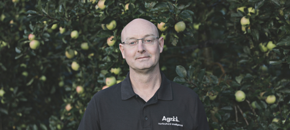New, Blogs & Case Studies
With so much research and product development going on at Agrii, we’ve always got news to share. To see our latest news and appearances in the media, scroll through the stories below. With so much research and product development going on at Agrii, we’ve always got news to share. To see our latest news and appearances in the media, scroll through the stories below.
Join Our Community

Agrii X
We love engaging with clients and partners. Give us a follow and let's share stories for the community.

Agrii Instagram
A picture paints a thousand words. Follow us on Instagram to see what we are up to.

Agrii LinkedIn
If you are all about the business, connect with us on LinkedIn to build your network
Stay In Touch

Newsletter Sign-Up
Receive a monthly email update on topical news and information from around Agrii and UK Farming.

Listen To Our Podcasts
Listen to the Tramlines Podcast. Fortnightly chat about agriculture and trials with your host Tony Smith.

Find an Event
Have a look at what's coming up and join us for our upcoming events and tours.



